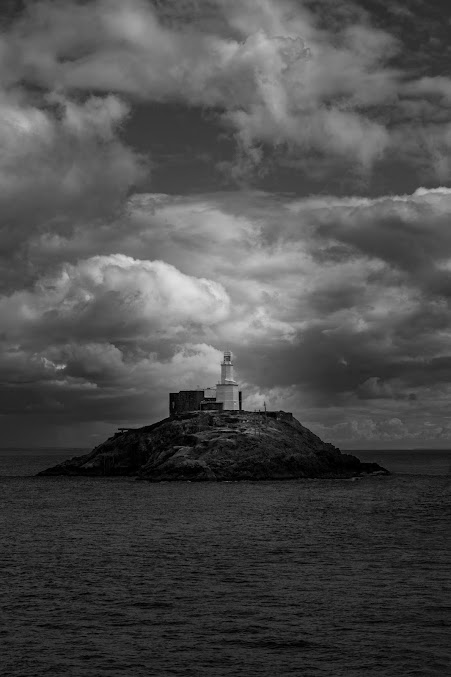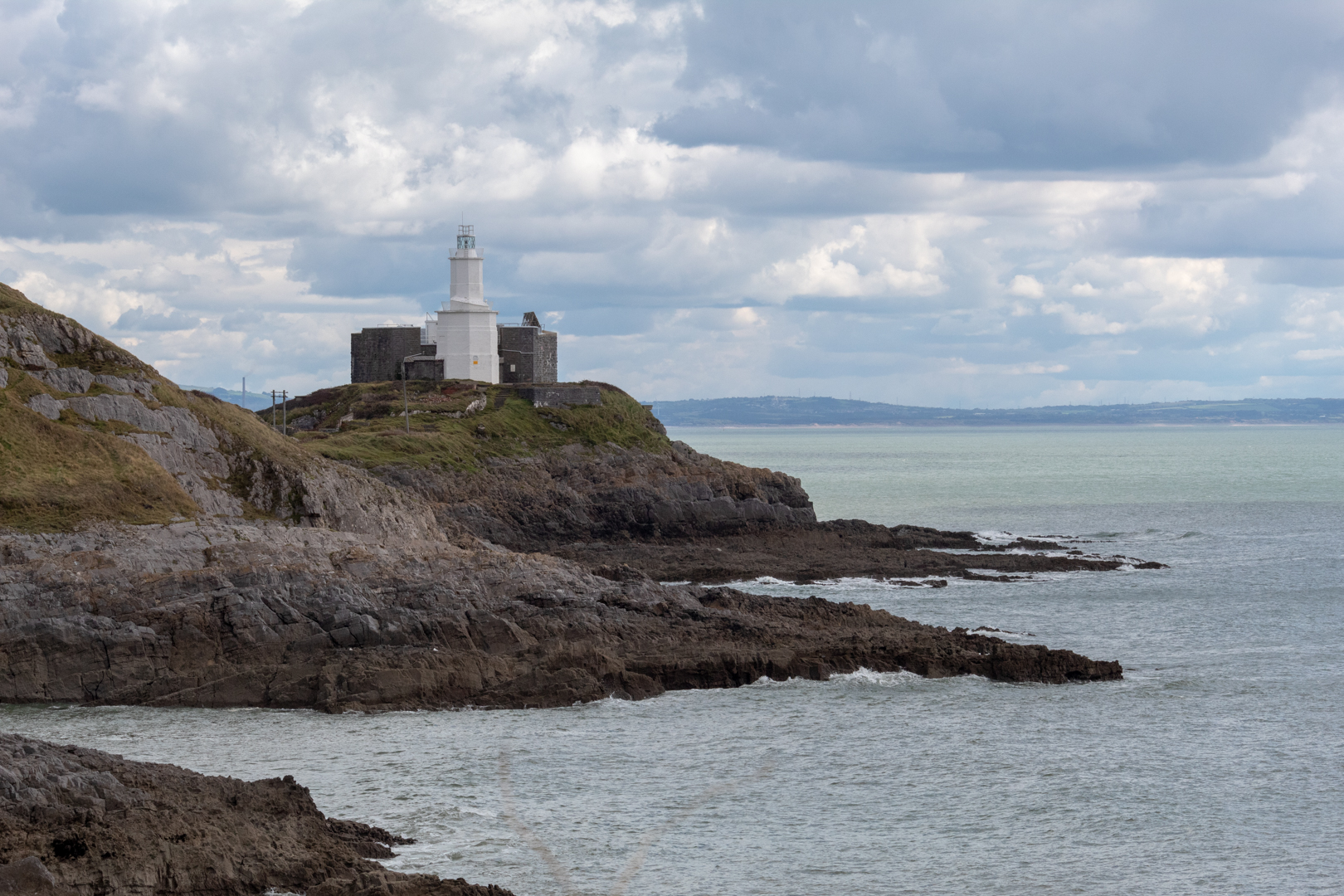It sits at the eastern edge of the Gower peninsular much of which forms the first area in the United Kingdom to be designated an Area of Outstanding Natural Beauty.
Mumbles or as we call it "The Mumbles" is a beautiful place to visit and I'm confident that the village will be the subject of a future blog but for now, it is the lighthouse that takes centre stage.
Built-in 1794 the tower is 17 metres high and stands on the outer of the two outlying small islands on Mumbles head between Swansea Bay and Bracelet bay.
It is 35 metres above mean high water and is one of the most photographed buildings in the area.
The Swansea Harbour Trustees were given the power to provide a lighthouse at the outer Mumbles in the Harbour Act of 1791; in July 1792 work began, but while in construction the structure collapsed in October of the same year.
In 1793 the plans of the local architect William Jernegan were accepted and the lighthouse was finally completed and lit in 1794.
Originally lit by two coal fires it was then converted to oil then a further upgrade in 1860, saw the oil-powered light upgraded to a dioptric light.
A flashing mechanism was added in 1905 and this was automated in 1934.
The lamp was electrified in 1969.
By the late 1970s the lantern was corroded and was replaced in 1987.
In 1995, the main light was replaced and an array of solar panels added.
Around the base is a fort or battery which surrounds the southern side of the lighthouse. it was built in 1860 by the War Department. It is one of the many Palmerston Forts built in response to a perceived French invasion.
It mounted five 80 pounder rifled muzzle-loading (RML) guns, two in casemates and three on the roof
In 1940 two 4.7-inch guns were manned by men of the 531st (Glamorgan) Coast Regiment, Royal Artillery. Well before the end of the war, as the German threat decreased, the battery was placed into care and maintenance.
Very near to the lighthouse is Mumbles pier the second landmark of Mumbles.
Built and opened on the 10th of May 1898 at a cost of £10,000
During a major renovation in 2012, a new lifeboat station and Royal National Lifeboat institution gift shop was built at the end of the pier and fishing platforms added.
The original Red and cream coloured lifeboat station can be seen alongside the new station.
Visit Information:-
Google Reference
51.566795772416825, -3.9708609642798742
Google Search reference: Mumbles Lighthouse
What Three Words reference : ///vertical.televise.junior
Additional information
Visiting Mumbles is very easy. Take the M4 motorway west until you see the first exit for Swansea then keep on the coast road through Swansea to the Mumbles.
Mumbles is a seaside town and has lots of parking along the coast and there is also a good car park on the west side at Bracelet Bay (51.566758645490815, -3.9814065526495392) which is called Limeslade bay Car Park.
Visiting Mumbles is very easy. Take the M4 motorway west until you see the first exit for Swansea then keep on the coast road through Swansea to the Mumbles.
Mumbles is a seaside town and has lots of parking along the coast and there is also a good car park on the west side at Bracelet Bay (51.566758645490815, -3.9814065526495392) which is called Limeslade bay Car Park.






Beautiful photographs. What a lovely place to visit.
ReplyDelete